Walkabove VSP with seismic-while-drilling technology: flawless operation in a highly deviated well
Adrian Cristian Sanchez Rodriguez A , Leon Dahlhaus A , Konstantin Galybin A , Andrew Vigor A , Grant Skinner A and Ton Noordervliet BA Schlumberger.
B Santos.
The APPEA Journal 53(2) 454-454 https://doi.org/10.1071/AJ12065
Published: 2013
Abstract
SWD was recently used in the North West Shelf of Australia to acquire time-depth measurements and to obtain a vertical seismic profile (VSP) while pulling out of hole. The use of SWD technology greatly enhanced the understanding of geology by acquiring a more precise geophysical picture of the subsurface, leading to better understanding of the subsurface and placement of wells in the future.
A vertical incidence VSP was acquired in an offshore deviated well for a client on the Australian North West Shelf. The data was acquired using a moving-surface source, suspended from a boat, and a four-component downhole sensor in the bottom hole assembly (BHA). The downhole data was acquired using three orthogonal geophones and a single hydrophone measurement at each VSP level. This was recorded while pulling out of hole, and processed once the tool was on surface. Time picking accuracy of the downhole data is ±0.5 ms with the frequency range 6–90 Hz, both comparable to Wireline. The repeatability of the hydrophone and geophone time picks was also excellent with the average difference being 0.2 ms and maximum 0.8 ms. High resolution VSP images beneath the well in addition to corridor stacks were derived from the geophone and hydrophone data, showing the geological structure of the reservoir.
The quality of the data acquired allowed the client to remove the need for a wireline VSP run; it, therefore, saved significant rig time and costs associated with it, reduced the chances of getting stuck, and significantly reduced the seismic uncertainty.
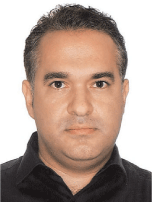
Adrian Sanchez has more than 16 years of experience working as geophysicist in the oil industry. He graduated from Simón Bolívar University of Caracas, Venezuela, in 1997 as geophysicist engineer. He worked at Western Geophysical between 1994 and 1997 as junior geophysicist. He started with Schlumberger in 1997 as borehole geophysicist and had been working in Venezuela, Argentina, Brazil, and Mexico in different technical and management positions. He moved to Australia in late 2012 as acoustic domain champion to support the sonic and seismic technologies. |
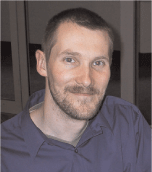
Leon is a senior borehole geophysicist at Schlumberger based in Perth, Australia. After receiving a master’s degree (1993) (geophysics) from Utrecht University, Netherlands, and an engineering degree (exploration geophysics) from IFP, France, he joined Schlumberger UK in 1997 as borehole geophysicist. In 2000, he moved to Australia as marine processing geophysicist at Geco-Prakla/WesternGeco. After various roles as ID and Wireline domain geophysicist, he is now borehole seismic team leader at Schlumberger’s PTS Data Services group. His experience covers a wide range of seismic and sonic technologies and their applications, including 3DVSP and time lapse projects. |
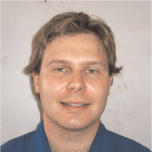
Konstantin has seven years of experience in the international oil and gas industry. He began his career in 2006 at Schlumberger Wireline in Australia. He was a field engineer and participated in numerous wireline logging jobs in the Perth Basin. In 2007, he moved to the data-processing centre in Perth and has focused on VSP survey design, processing, and interpretation. His main interests are interbed multiple analysis, VSP inversion, and anisotropy. He has obtained a bachelor’s (honours) degree and a PhD (mathematical geophysics) from UWA. |
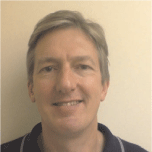
Andy has more than 30 years of experience in the international oil and gas industry. He began his career in the early 1980s at Schlumberger in the North Sea based in Aberdeen. He later moved to Jakarta holding regional technical and marketing positions covering Asia Pacific. He moved from Indonesia through a number of positions and countries including Australia, Singapore, and Dubai where he held a regional position for the Middle East and Asia. He re-located back to Australia to Perth in 2003 and has since held technical, operations management, and strategic business positions at Schlumberger. |
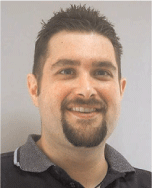
Grant Skinner graduated from the University of Saskatchewan in 1999 with a BSc (geology). He has extensive experience in the oil industry including work in Europe, North Africa, North America, India, West Africa, and Trinidad. He is presently a senior geologist working as well placement domain champion for Schlumberger Australasia where he coordinates geosteering development and operations. Member: FesAUS, SPE, SPWLA. |
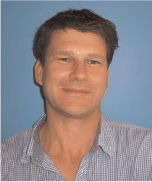
Ton Noordervliet is drilling engineer with strong background in directional drilling and experience in both the planning and execution phase. He focuses on safe and cost-effective optimisation of performance. His specialties are directional drilling, casing design, well planning, cost control, and risk assessment. |
References
Australian Government Department of the Environment, Water, Heritage, and the Arts, 2008—Referral decision. Accessed 17 April 2013. http://www.environment.gov.au/cgi-bin/epbc/epbc_ap.pl?name=current_referral_detail&proposal_id=4461.Geoscience Australia, 2008—Carnarvon Basin. Accessed 17 April 2013. http://www.ga.gov.au/oceans/rpg_Carnarvon.jsp.
Sanchez, A., Mora, A., Aguilera, L., and Gaitan, R., 2010—Minimising drilling risks for exploration in deep water using SWD technology. Rio Oil and Gas Expo and Conference, Rio de Janeiro, 13–16 September, IBP3018.
Santos, 2012—Fletcher Finucane. Accessed 17 April 2013. http://www.santos.com/exploration-acreage/development-projects/fletcher-finucane.aspx.
Tulett, J.R., Duncan, G.A., and Thompson, P.R., 2002—Borehole seismic air-gun sources: what’s the safe distance from a ship’s hull? The International Conference on Health, Safety and Environment in Oil and Gas Exploration and Production, Kuala Lumpur, Malaysia, 20–22 March, SPE 74177.


